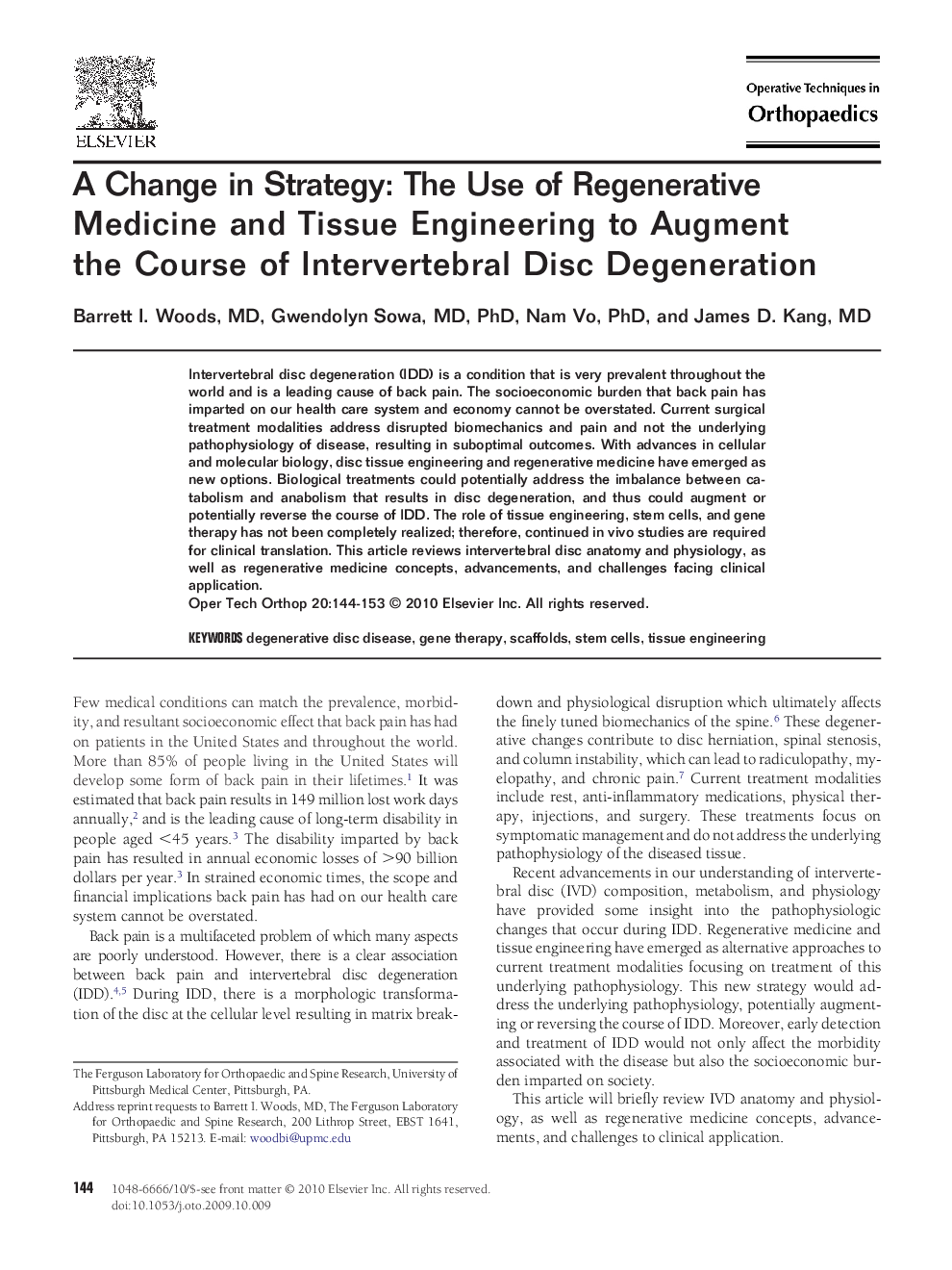| Article ID | Journal | Published Year | Pages | File Type |
|---|---|---|---|---|
| 4079117 | Operative Techniques in Orthopaedics | 2010 | 10 Pages |
Intervertebral disc degeneration (IDD) is a condition that is very prevalent throughout the world and is a leading cause of back pain. The socioeconomic burden that back pain has imparted on our health care system and economy cannot be overstated. Current surgical treatment modalities address disrupted biomechanics and pain and not the underlying pathophysiology of disease, resulting in suboptimal outcomes. With advances in cellular and molecular biology, disc tissue engineering and regenerative medicine have emerged as new options. Biological treatments could potentially address the imbalance between catabolism and anabolism that results in disc degeneration, and thus could augment or potentially reverse the course of IDD. The role of tissue engineering, stem cells, and gene therapy has not been completely realized; therefore, continued in vivo studies are required for clinical translation. This article reviews intervertebral disc anatomy and physiology, as well as regenerative medicine concepts, advancements, and challenges facing clinical application.
